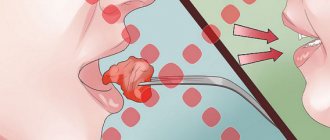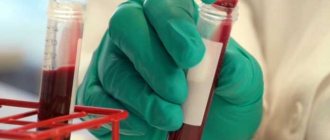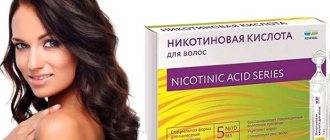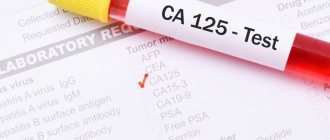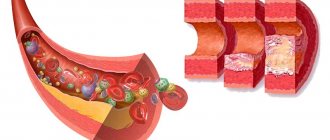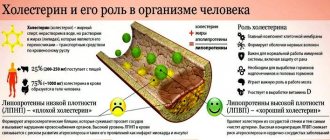How is bilirubin formed?
Hemoglobin, which delivers oxygen to all organs and systems, is located in erythrocytes or red blood cells. Having aged, they are destroyed with its release.
Through chemical reactions, it is transformed into indirect bilirubin, which is toxic (poisonous). By binding to other substances in the liver, it is converted into direct (bound), less dangerous. This pigment is removed through the intestines with bile secreted by the liver. This is the substance that colors stool.
The conversion of hemoglobin to bilirubin can be observed visually during the formation of bruises . A change in color from bluish to purple occurs when blood escapes from damaged vessels into the tissue.
The appearance of a greenish tint is observed when pigments of the corresponding color leave hemoglobin. Finally, as bilirubin forms, the bruise turns yellowish.
Bile pigment is found in small quantities in blood plasma. Exceeding the norm signals problems with the liver and impaired bile flow. In men, Gilbert's syndrome, in which bilirubin increases, is diagnosed many times more often (about 10 times) than in women.
This is manifested by a slight yellowing of the skin. This effect is so insignificant that many carriers of the syndrome are not even aware of it.
Norm
A child's and an adult's bilirubin levels will be completely different. But for women and men they are the same. Children produce significantly more of this pigment than adults.
In order to find out the level of indirect bilirubin, a simple formula is derived. It is calculated as the difference between the total indicator and direct pigment .
If the patient is healthy, then bilirubin levels will be in the following ranges:
The norm in children at birth can reach 150 µmol/l. A little later it rises to 15.3 µmol/l.
Types of bilirubin
Total bilirubin consists of two fractions:
- direct (related, conjugated);
- indirect (unbound, free).
Their main difference is their ability to dissolve in water.
Indirect bilirubin
It is formed in the spleen, which is responsible for the disposal of aged red blood cells. Here the blood cells are destroyed and a toxic enzyme appears. It does not dissolve in water, so the kidneys are not able to eliminate it from the body.
Indirect bilirubin combines with the blood component albumin, is sent through the vessels to the liver, where it is transformed into direct bilirubin.
It is able to dissolve in the fats of healthy cells, causing them harm through toxicity. Therefore, it is important to monitor the normal level of its content in the blood. Indirect pigment is dangerous, having the ability to disrupt cellular respiration and protein formation.
Straight
It is low toxic and practically harmless. Formed in the liver. Easily dissolves in aqueous media.
Direct bilirubin is excreted from the body through urine and feces.
Bilirubin in newborns
Before birth, the child’s body contains special (fetal) hemoglobin. After birth, this hemoglobin ceases to participate in the transfer of oxygen and is excreted from the body. As a result, some newborns may experience jaundice in the first days; this is due not only to the large amount of bilirubin excreted from the body, but also to the fact that the child’s enzyme systems responsible for processing bilirubin mature only a few days after birth.
The condition of increased bilirubin in newborns is relieved using phototherapy. Irradiation with blue-violet radiation is used.
Related articles:
Compliance of bilirubin concentration with standards
The level of bile pigment is compared with the corresponding norms. In 100% of the total amount, approximately one fifth is bound pigment, the rest belongs to free pigment.
Table 1 - normal indicator of bile pigment in men.
Bilirubin is a relatively well-known medical term, but few people know what its readings mean. We are talking about bile pigment, a waste product created by filtering blood from defective red blood cells. Unconjugated bilirubin occurs during the breakdown of hemoglobin. It penetrates hematogenously into the liver, where glucuronic acid acts on it, converting unconjugated bilirubin into conjugated bilirubin.
Sometimes laboratory tests show increased bilirubin in the blood and what does this mean in men and women? The reasons for increased unconjugated bilirubin are liver overload. We may be talking about a serious illness - Gilbert's syndrome, but exceeding the norm can also be a short-term indicator that gradually stabilizes. Why are indicators increasing, and what to do about it?
What is bilirubin?
Bilirubin (total bilirubin) is a pigment belonging to the hemoglobinogenic group. It is created mainly as a result of the destruction of “old” red blood cells, and the products of the destruction of cytochromes and myoglobin also take part in its formation. Bilirubin is considered a natural toxic substance in the body.
After formation, total bilirubin accumulates in the liver along the bloodstream. The carrier, in this case, is Albumin, a protein that binds pigment on the way to the organ.
An interesting fact is that red blood cells choose the bone marrow, spleen and liver tissue as places for breakdown. Almost 1% of the blood cells in their cells are destroyed daily, and about 0.3 g of bilirubin is created from the resulting hemoglobin.
It follows from this that the presence of bilirubin in the blood does not mean pathologies of either the liver or other important organs of the body. But the amount of pigment present is within the normal range, and when these limits are violated, it is customary to talk about increased bilirubin.
Etiopathogenesis (causes and mechanism of development)
Liver cells contain enzymes whose functions include, among other things, the conversion and elimination of waste substances from the body.
The mechanism for the development of increased bilirubin in the blood (hyperbilirubinemia, Gilbert's syndrome) is based on a lower power of the enzyme (glucuronosyltransferase), leading to a slower excretion of bilirubin into the bile and, consequently, from the body. Specialized medical literature says that this problem affects up to 10% of the population.
An increase in blood levels in adults may be due to an increase in the death of red blood cells (hemolytic anemia).
Hyperbilirubinemia is classified according to the type of bilirubin whose concentration increases:
- unconjugated - the liver does not have time to remove the pigment from the blood when it is excessively formed; if secretion is not increased, the reasons may lie in the lack of sufficient absorption or conjugative capacity of the organ;
- conjugated - most often, the value increases due to obstruction of the biliary tract;
- mixed - the indicator of unconjugated and conjugated bilirubin increases, mainly when hepatocytes are damaged.
Prevention
It is almost always enough to follow simple recommendations:
- It is necessary to eat well, eat small portions and not overeat. Anemia is a common accompaniment of malnutrition, while liver problems are observed from poor diet and overeating.
- It is important to give up alcohol or minimize its consumption.
- At the first manifestations of liver disease, gallbladder disease, or even suspicions, you need to go to the doctor for examination.
Increasing indirect bilirubin is a complex problem. However, with timely diagnosis and treatment of the underlying disease, it is possible to cope with it. It is important to do this in tandem with a doctor and not self-medicate.
It is widely believed that increased bilirubin in the blood is a sure sign of liver disease. The fallacy of this opinion is discussed in the first part of this article - “Does elevated bilirubin always indicate liver problems?” There you will also learn why direct bilirubin is increased in some diseases, and indirect in others.
What is bilirubin, how does indirect bilirubin differ from direct bilirubin? Read about this in the article “Indirect and direct bilirubin: features of metabolism”
The range of diseases that can cause increased levels of bilirubin in the blood is quite wide. This circumstance makes diagnosis difficult. This part of the article discusses the reasons for the increase in indirect bilirubin. The reasons for increased direct bilirubin will be discussed separately in the next part: “Causes of increased direct bilirubin.”
Of course, this division is quite arbitrary, since many diseases, in particular acute viral hepatitis, are accompanied by an increase in both forms of bilirubin. In such situations, the correct interpretation of the analysis result is not as simple as it might seem at first glance.
Reasons for the presence of bilirubin in the blood
As already mentioned, there are many reasons for the increase in bile pigment levels. As well as the reasons why a doctor performs laboratory blood tests to determine levels.
The most common indications for research are the following:
- abdominal pain;
- nausea;
- vomit;
- yellowing of the whites of the eyes;
- yellowing of the skin.
Bilirubin (total) should be monitored in alcoholics, drug users, and people taking medications that have adverse effects on the liver. Rapid weight loss should not be underestimated - in this case it is also advisable to conduct an analysis.
When examining the values of this parameter:
- symptoms of liver damage: jaundice (yellowing of the skin, mucous membranes and whites of the eyes), dark brown urine, nausea, vomiting, abdominal enlargement, weight loss, stomach pain, swelling in the right leg, signs of flu, joint or skin damage;
- history of liver inflammation;
- contact with viruses that infect the liver;
- regular consumption of increased amounts of alcohol;
- family history of hepatogenic diseases;
- taking medications that can damage the liver;
- monitoring of the therapeutic course for liver diseases;
- suspected hemolytic anemia;
- use of narcotic drugs.
Ways to lower bilirubin
If you find yourself with symptoms of increased direct bilirubin, then you need to get rid of them, since this condition can affect the condition of the internal organs. To lower the level of this pigment, you first need to study your diet. Good results can be achieved by changing your diet. To do this you need:
- stop eating fried and spicy foods;
- completely eliminate alcoholic beverages from the diet;
- do not consume drinks with gases;
- Newborn babies need to drink more fluids to quickly remove toxins from the body.
It is necessary to pay maximum attention to the condition of the liver. By applying these simple nutritional rules, you enable this organ to cleanse and recover. A healthy liver actively gets rid of large amounts of bilirubin in bile and blood. In addition, it is necessary to monitor the healthy functioning of the intestines. Boiled and baked foods promote good intestinal function. You cannot exhaust yourself with endless diets or hunger, this leads to a malfunction of the digestive organs.
Thus, only a symptom is a condition in which direct bilirubin is increased. What does it mean? This suggests that it is important not only to reduce the amount of pigment in the blood, but also to treat the cause.
Pathological processes in the liver will manifest themselves through nausea, pain in the area of this organ, a feeling of heaviness, fever, and a bitter taste in the mouth. If increased bilirubin is caused by anemia, this will manifest itself through a yellow tint to the mucous membranes, chronic fatigue, rapid heartbeat, and pain in the left side of the chest. Increased bilirubin, caused by diseases of the biliary tract, will manifest itself through dark urine, loss of appetite, severe itching and nausea.
In such conditions, it is necessary to take a blood test for direct bilirubin. The doctor will tell you what the results and recommendations for reducing it mean.
Causes of hyperbilirubinemia
An increase in total bilirubin occurs for several reasons:
- increased pigment formation (red blood cell breakdown) due to hemolysis;
- the problem with its elimination is Gilbert's syndrome;
- the combined option is a rarer occurrence.
These conditions usually occur due to hemolytic anemia, hepatogenic diseases or diseases of the biliary tract (gallbladder disease, gallstones). Causes of elevated levels also include:
- atherosclerosis;
- cancer;
- inflammation;
- autoimmune diseases;
- neurodegenerative diseases;
- hepatitis A, B, C, E;
- Wilson's disease;
- alcohol poisoning;
- drug abuse;
- malaria;
- mononucleosis;
- heart failure;
- liver infections;
- artificial heart valves.
Sometimes the causative factors of high bilirubin can be:
- genetic influences;
- use of certain medications (chemotherapy, sulfonamides).
Diagnostics
Sometimes it is enough to look at the patient to guess what he is sick with. In the case of bilirubin, the sclera of the eyes becomes yellow. Particularly severe cases are accompanied by yellowing of the skin.
An increase in bilirubin can be detected through a biochemical blood test. However, this is not informative. It is much more important to establish the root cause of the problem. Depending on the cause, consultation with the following specialists is recommended:
- hematologist (for anemia);
- gastroenterologist (for pathologies of the liver and gallbladder);
- hepatologist (instead of a gastroenterologist for liver problems).
The first thing the patient needs to do is go to an appointment with a general practitioner. He will make an initial diagnosis and give referrals to other doctors. Often instrumental studies are used to establish an accurate diagnosis:
- Ultrasound of the abdominal cavity. Allows you to identify problems with the liver and gall bladder.
- Liver scintigraphy. Provides an opportunity to assess the functionality of the organ.
To identify anemia, a general blood test is required, which will show a decrease in hemoglobin and a deficiency of red blood cells.
Increased value – as an indicator of painful conditions
1st line - the formation of bile pigment may increase due to increased breakdown of red cells:
- anemia due to congenital malformations of red blood cells or red blood dye (sickle cell anemia, thalassemia);
- transfusion of incompatible blood;
- mechanical destruction of red blood cells on artificial heart valves;
- primary hyperbilirubinemia (bilirubin is produced directly from hemoglobin in the bone marrow due to impaired hematopoiesis);
- consequences of heart surgery, heart failure (liver congestion with blood);
- absorption of larger blood lesions;
- infections.
2nd line – hepatogenic diseases:
- acute, long-term viral hepatitis;
- autoimmune inflammation of the liver (the action of the immune system is directed against its own tissues and organs);
- acute inflammation caused by alcohol;
- toxic damage (poisoning with halogenated hydrocarbons, fly agarics);
- steatosis (increase in fat) of the liver;
- cirrhosis;
- insufficient liver circulation with oxygen deficiency in its tissues;
- liver cancer;
- liver failure;
- liver abscess (cavity filled with pus);
- lack of alpha-1-antitrypsin (a protein produced in the liver that protects the body from the effects of enzymes released from white blood cells during an inflammatory response).
3rd line – violation of bilirubin conjugation (compound with glucuronic acid) in the liver:
- Gilbert, Crigler-Najjar syndrome.
4th line – impaired excretion of pigment by the hepatic bile ducts:
- Dubin-Johnson syndrome, Rotor;
- inflammation of the bile ducts;
- stagnation of bile due to estrogen;
- bile duct tumors.
5th line – violation of the outflow of bile in the bile ducts:
- narrowing, blockage with stones;
- tumor of the gallbladder, bile ducts, pancreas;
- inflammation of the bile ducts, gallbladder and pancreas.
Total bilirubin is elevated - what does this mean in an adult and how to treat it?
If direct bilirubin is slightly increased (no more than 5 µmol/l), a repeat test is prescribed after 3-5 days in order to exclude internal and external factors that influence the result. For example, daily fluctuations in all laboratory blood parameters or the subject’s neglect of the rules for preparing for the collection of biomaterial.
Thus, bilirubin in the blood - 3 is considered a slight deviation to the lower side, which can be caused by recent consumption of alcohol, large amounts of coffee or medications.
Treatment of any pathology is the task of the doctor. Self-diagnosis and independent choice of treatment methods can lead to a worsening of the disease, even death.
The reasons why total bilirubin is elevated are different and are always pathological in nature. Of particular importance in differential diagnosis is which fraction exceeds the norm.
What does it mean if direct bilirubin is elevated in an adult?
The reasons for the increase in the value of total bilirubin in the blood, mainly due to the direct fraction, include:
- Cholidocholithiasis is a pathological condition that occurs with cholelithiasis. It manifests itself in the form of the formation of stones that block the lumen of the bile ducts. The importance of early detection is due to frequent complications. Lack of adequate treatment contributes to the development of cirrhosis, pancreatitis or pancreatic necrosis. The preferred method of treatment is endoscopic or liparoscopic stone removal. Relapse in 25% of cases within 5 years. Repeated surgery is accompanied by removal of the gallbladder;
- Hepatitis C is an infectious disease that causes inflammation of the liver. According to statistics, 150 million people are infected with the hepatitis C virus. It is called the “gentle killer” because the patient may not know about the infection for a long time. The patient can live up to 40 years without showing serious pathological signs. The prognosis depends on the presence of concomitant diseases. Thus, HIV-positive status significantly increases the risk of developing cirrhosis or liver cancer;
- Primary sclerosing cholangitis is a rather rare pathology in which the tissue of the bile ducts becomes inflamed and grows. The outcome is biliary cirrhosis, accompanied by impaired immune regulation. At the same time, the immune system begins to destroy its own normal cells of the bile ducts, perceiving them as genetically foreign material (antigens);
- malignant neoplasms in the pancreas;
- Dubin-Johnson syndrome is a disruption of the process of releasing the bound fraction from liver cells, resulting in its abnormal movement in the opposite direction. In other words, bilirubin is not released from the liver, but, on the contrary, enters it from the bile ducts. The pathology is genetic in nature and manifests itself in the form of chronic jaundice. The prognosis of the disease is extremely favorable, since it does not affect life expectancy in any way;
- Rotor syndrome - similar to the previous disease, however, has a less pronounced degree of severity;
- alcoholic liver damage is a disruption of the normal functioning of liver cells due to long-term (more than 10 years) intoxication with alcohol and its breakdown products. Possible consequences: alcoholic hepatitis, cirrhosis, cancer and fatty liver.
Increase in total bilirubin due to the indirect fraction
List of diseases accompanied by high levels of indirect bilirubin in the blood:
- autoimmune hemolytic anemia - occurs as a result of the production of autoimmune heat antibodies (react at temperatures above 37 ° C). May be due to medications or leukemia;
- hemolytic anemia is characterized by increased destruction of red blood cells with excessive release of the indirect fraction into the blood;
- megaloblastic anemia - a lack of vitamin B 12 leads to the deposition of immature red blood cells. At the same time, the content of hemoglobin, and, as a consequence, its breakdown products increases significantly;
- hereditary microspherocytosis - changes in the protein of the erythrocyte membrane, leading to a violation of its integrity and increased degradation processes;
- Cooley's anemia is a mutation of the polypeptide chains of hemoglobin. Defective genes that increase bilirubin are HBA1, HBA2 and HBB. Characterized by severe changes in the structure of the skull, nose and teeth. Chronic jaundice, enlarged spleen and liver. Early manifestation of the disease leads to mental and physical underdevelopment;
- Gilbert's syndrome (non-hemolytic familial jaundice) is a pigmented benign liver disease in which the intracellular transport of the unbound fraction to the site of attachment of sugar-containing substances is disrupted. Despite the chronic course throughout life, it does not affect its duration;
- congenital Crigler-Nayjar syndrome is a malignant disease accompanied by chronic jaundice and pathologies of the nervous system. Jaundice occurs as a result of a failure in the transformation of indirect bilirubin into direct bilirubin due to the absence/lack of necessary enzymes;
- Malaria is an infectious disease, in the life cycle of which the pathogen includes a reproduction phase in erythrocytosis. After maturation, the parasitic plasmodium is released from red blood cells, starting the active process of their destruction. One of the complications is the occurrence of chronic renal or liver failure.
Signs of an elevated level
The most obvious symptoms of increased bilirubin are:
- yellow skin;
- yellow nails;
- yellow eye whites;
- fatigue;
- pressure in right leg;
- nausea;
- itchy skin;
- sudden weight loss;
- flu-like symptoms;
- Combined manifestations may occur.
Less commonly, signs include brown urine.
Toxicity of high bilirubin
The condition, when there is elevated bilirubin in the blood, is especially dangerous for newborns, as it can damage their brain. There is also a danger for adults (see below).
Direct consequences of elevated concentrations
Hyperbilirubinemia more than 43 mmol/l in older children and adults clinically causes jaundice - yellowing of the skin and mucous membranes.
In the case of an increase in conjugated bilirubin with complete obstruction of the biliary tract, the formation of urobilinoids does not occur, because bile pigment is not excreted into the gastrointestinal tract using bile. The result of this is aphoric gray stool. Conjugated bilirubin is filtered in the kidneys, resulting in bilirubinemia.
Unconjugated hyperbilirubinemia (particularly associated with acidosis and lack of free albumin) can lead to the accumulation of bilirubin in the central nervous system and subsequent damage (bilirubin encephalopathy). This means the dissolution of hydrophobic bilirubin in membrane lipids, damage to membrane permeability, membrane transport and affects the neuronal regulatory mechanism. Some sources also point to impaired oxidative phosphorylation in mitochondria.
Interesting
Scientists have recently published information that adds more importance to bile pigment and negates the existing information that reducing its levels should not be given much importance. Research has confirmed that this is a significant antioxidant that the body produces on its own. It has been shown that with a slight increase in its level, the risk of developing lung cancer is reduced in both women and men.
Bilirubin is one of the key elements of bile in the human body. It is a segment formed after the fragmentation of proteins, one of which is hemoglobin. Produced by macrophages of the liver and spleen. Its synthesis is also observed in the bone marrow. The normal level of bilirubin in men is determined differently, depending on the form of this compound.
How to reduce bilirubin?
Only the attending physician can reliably tell you how to reduce the level of increased bilirubin, so it is simply unacceptable to hesitate even if there is a slight yellow tint to the skin or sclera of the eyes. This can be life-threatening.
If the condition of hyperbilirubinemia is not dangerous, the doctor has the right to prescribe a complex treatment consisting of two phases: medication and diet. However, first of all, the cause of the disease that provokes the direct growth of pigment in the blood should be treated.
Drugs
If bile flow is impaired, choleretic agents may be helpful. Treatment of intoxication in such conditions is carried out by intravenous infusion of detoxification solutions, sorbents, antioxidants, with the addition of glucose.
Congenital pathologies are usually prescribed treatment depending on external manifestations. The prescription specifies choleretic drugs, sorbents, and vitamin complexes.
It is recommended to treat the infectious cause of hyperbilirubinemia with antibiotics and, as maintenance therapy, anti-inflammatory, immunostimulating, and hepatoprotective drugs to protect liver cells.
Diet that reduces bilirubin
Reduces the level of bilirubin in blood tests, along with drug treatment, and special dietary nutrition. For this purpose, it is necessary to exclude from the diet:
- all fried foods;
- offal (chicken, turkey, pork, beef liver, kidneys, minced liver);
- spicy dishes and sauces;
- smoked products;
- pickled and canned vegetables;
- canned meat;
- carbonated, as well as alcoholic and low-alcohol drinks;
- any cold foods and liquids.
It is recommended to alleviate the condition of the body and liver, in particular, with the help of fractional meals, 6 times a day. Portions should be small, leaving a slight feeling of hunger after eating. At the same time, you should not overdo it, eating every 2-3 hours.
The emphasis, in this case, can be placed on foods rich in pectin and fiber. You should definitely limit your intake of salt and sugar. It is also necessary to control the amount of liquid you drink per day at the level of 1.5-2 liters.
You can eat several types of cereals a day; buckwheat, rice and oatmeal have a particularly lowering effect on bilirubin. No less beneficial effects have:
- dairy products, always low-fat;
- chicken egg white;
- boiled and stewed vegetables;
- lean meat fillet;
- liquid dishes (soups, both traditional vegetable and dairy desserts);
- herbal teas;
- You can eat fruits, but only sweet ones.
(Is the article useful?)
Substance classification
Bilirubin is present in large quantities in blood plasma. When there is stagnation of bile or a person develops liver pathology, its content in the blood increases, which entails jaundice. There is an assumption that bile pigment is one of the main cellular antioxidants. If this is true, then the question arises about the need for constant monitoring of its level. In the blood of men, as in women, bilirubin is measured in total quantity. There is also an indicator indicating the content of its two factions. This means bilirubin:
- straight;
- indirect.
These are called bound and unbound types of bilirubin, respectively. In the first case, the compound is soluble in water and does not cause harm to the body due to low toxicity. This bile pigment is produced in hepatocytes and is then excreted in biological fluids.
Indirect bilirubin is synthesized by spleen tissue. This organ promotes the recycling of old blood cells. It destroys them, forming indirect bilirubin. This pigment does not dissolve in water, and the kidneys cannot remove it from the tissues. For this reason, bilirubin indirectly combines with albumin contained in the blood. After this, the substance moves freely through the bloodstream and goes to the liver cells.
Through complex biochemical processes, the compounds are converted into direct bilirubin, which is excreted by kidney cells. The indirect pigment is toxic and is neutralized after filtration through the liver. It is highly soluble in fats and can penetrate healthy tissues, leading to disruption of their function .
First of all, the brain and central nervous system suffer from indirect bilirubin, which is why it is so important to keep the level of this component normal.
General information about bilirubin
It is produced in the liver, spleen and bone marrow, and is part of bile. If these processes are disrupted, the color of stool and urine may change. When taking tests, three forms of bilirubin are usually determined:
- Indirect, manifests itself in a free form, not associated with glucuronic acid and insoluble in water. This substance is quite toxic. When it accumulates for a long time in brain cells, significant disturbances occur.
- Straight. It appears when the process of binding of indirect bilirubin with glucuronic acid occurs, for which the liver is primarily responsible. This phenomenon is called conjugation. Part of the direct bilirubin returns to the bloodstream and travels through it to the kidneys, where the process of filtration and excretion in the urine begins. The rest goes into bile and is excreted in feces.
- General. It is expressed as the sum of direct and indirect pigment indicators.
Deciphering a blood test helps to find out about the presence of pathology when the indicator is higher or lower than optimal values.
Normal for men
A laboratory blood test for bilirubin provides information about the level of total bile pigment, direct and indirect. The relationship between the last two varieties is very important. This indicator makes it possible to make a correct diagnosis if there are deviations from normal values. The content of bile pigment should be as follows: 20% for bound and 78% for free.
As for the quantitative content, the norm of bilirubin is as follows:
- general: 8.40−19.80;
- straight: 0.10−8.10;
- indirect: up to 20.0.
These indicators are measured in µmol/l. Standards are provided for representatives of the fair sex. However, men have one characteristic feature. They can act as carriers of Gilbert's syndrome. This pathology occurs 10 times more often in them than in women. This is the designation for a hereditary variant of hepatosis. Unconjugated bilirubin increases with this disease, causing the sclera and the surface of the epidermis to become jaundiced. The disease is found in 5% of the world's population, 90% of whom are men.
A number of experts are of the opinion that Gilbert's syndrome is not a pathological condition, but a physiological feature. It was not possible to establish why he targets men more often. Many carriers of the syndrome do not know that they have it. TO
Clinical manifestations sometimes do not make themselves felt until the age of 19. The disease is often discovered by chance: during a standard doctor’s examination or after laboratory tests.
Bilirubin norms
Indirect bilirubin in normal measurements is no more than 16.2 µmol/l of blood.
Direct bilirubin should be between 0 and 5.1 µmol/l of blood.
Based on the results of each individual norm, the total bilirubin level should fit within the range of 0.5 - 20.5 µmol/l of blood.
Increases in bilirubin of one or another subtype are called hyperbilirubinemia, and its symptoms make themselves felt from 34 micromol per liter of blood.
The condition of the body, when the level of bilirubin is tens of times higher, is life-threatening for the patient and requires urgent medical attention.
There are also special norms developed separately for women, men and children.
| Bilirubin norms for women by age (years/µmol/liter) | |
| 18-19 | from 3.5 to 17 |
| 20-29 | from 4 to 18 |
| 30-39 | from 3.8 to 17.8 |
| 40-49 | from 3.9 to 17.6 |
| 50-59 | from 3.7 to 17.4 |
| 60-69 | from 3.4 to 17.1 |
| more than 70 | from 3.1 to 16.9 |
| Bilirubin norms for men by age (years/µmol/liter) | |
| 17-19 | from 3.7 to 18 |
| 20-29 | from 3.8 to 19 |
| 30-39 | from 3.8 to 18.9 |
| 40-49 | from 3.9 to 18.6 |
| 50-59 | from 3.8 to 18.5 |
| 60-69 | from 3.7 to 18.4 |
| more than 70 | from 3.5 to 18.2 |
| Bilirubin norms for children under one year (months/years/µmol/liter) | |
| first days | from 50 to 210 |
| first 2 weeks | from 6 to 25 |
| 3-4 weeks | from 4 to 20 |
| 1-2 months | from 3.9 to 17.6 |
| 3-5 months | from 3.5 to 18.4 |
| six months to a year | from 3.4 to 18.1 |
| Bilirubin norms for children from one year to 18 years (years/µmol/liter) | |
| year -2 years | from 3.3 to 18 |
| 3-5 | from 3.2 to 17.9 |
| 6-8 | from 3.1 to 17.8 |
| 9-10 | from 3.1 to 17.6 |
| 11-14 | from 3.2 to 17.5 |
| 15-18 | from 3.1 to 17.2 |
Signs of increase
A healthy man has a small amount of direct bilirubin in his blood. If any disruptions occur in the body, this compound quickly accumulates in biological fluids. After penetration into the tissue, the compound promotes their pigmentation in a yellow tint. At the same time, the following symptoms may occur:
- bitterness in the mouth;
- heaviness in the right hypochondrium;
- discolored stool;
- urine becomes the color of beer.
Concomitant symptoms with increased indirect bilirubin
Although self-diagnosis is a dead-end path, knowledge of the symptoms accompanying a particular disease is necessary. This makes it easier to figure out which specialist to contact.
- Anemia. Anemia is characterized by: weakness, vertigo (dizziness), pale skin, headache.
- Hepatitis is accompanied by: pain in the liver (aching, dull pain), a feeling of fullness in the right hypochondrium, bitterness in the mouth (due to the reflux of bile into the bloodstream and digestive tract), sour taste, belching.
- Cirrhosis of the liver. Constant companions of cirrhosis, in addition to the already mentioned “liver” symptoms, are: yellowing of the skin, development of spider veins on the skin, change in the color of stool (faint beige or white stools).
- Problems with the gallbladder are accompanied by nausea, vomiting, diarrhea or constipation, intense dagger pain in the right hypochondrium.
- Genetic and other syndromes. They are characterized by the development of severe jaundice.
- Parasitic lesions. When they occur: nausea, vomiting, sudden weight loss.
- Vitamin deficiencies are rarely accompanied by noticeable symptoms. We can talk about bleeding gums (as well as if direct bilirubin is increased), muscle weakness, skin problems, etc.
The most common symptoms of increased indirect bilirubin were and remain:
- decreased appetite;
- nausea;
- yellowing of the skin and sclera;
- belching with a sour taste;
- weakness, weakness;
- headache and dizziness;
- vomit;
- pain in the right side;
- flatulence;
- discoloration of stool;
- skin itching.
Based on the characteristic symptoms, the patient can assume this or that problem and go to a specialized specialist for help.
Reasons for the increase
If, after the examination, an excess of the permissible norm of direct bilirubin was revealed, this indicates the presence of pathology. More often we have to deal with hereditary jaundice and liver tissue damage, including cirrhosis. This phenomenon can be caused by hepatitis, cholelithiasis and infection with worms.
When indirect bilirubin is increased, this may indicate that a man has a congenital pathology of red blood cells or acquired variants of systemic diseases, such as lupus and lymphogranulomatosis. Hemorrhage of internal organs, blood poisoning, and syphilis contribute to an increase in the level of this compound. This may be the result of taking certain medications. If a representative of the stronger sex takes insulin, or abuses aspirin and chloramphenicol, his bilirubin may increase as a side effect.
Increased indirect bilirubin caused by liver disease
The transformation of indirect bilirubin into direct bilirubin occurs in the liver cell - hepatocyte on the way from the blood capillary to the bile. The congenital failure of the enzyme systems of liver cells makes the process of converting bilirubin from one form to another impossible and leads to the accumulation of unprocessed indirect bilirubin in the body. The substrate of the pathological process is at the subcellular level, which makes diagnosis extremely difficult. In some cases, a biopsy (sampling for microscopic examination) of liver tissue is necessary. Unlike non-hepatic hemolytic anemia, the spleen in these cases is not enlarged.
Diseases belonging to this group are few in number and occur infrequently.
| Signs of increased indirect bilirubin caused by liver disease |
| Indirect bilirubin is increased |
| Direct bilirubin is normal |
| The spleen is not enlarged |
| Hemoglobin is normal |
| Blood reticulocytes are not elevated |
| Urobilinogen in urine is moderately increased |
Liver diseases accompanied by increased indirect bilirubin:
Scheme 3a. The conversion of indirect bilirubin into direct bilirubin by combining it with glucuronic acid occurs in liver cells on the surface of the so-called. microsomes with the participation of the enzyme glucuronyltransferase. Scheme 3b. At least 20% of drugs, including paracetamol, use the same enzyme systems for their metabolism as indirect bilirubin. The displacement of bilirubin from enzymatic reactions by competing substances leads to its accumulation in the body and to the development of non-hemolytic jaundice.
Factors leading to the decline
When bile pigment drops below acceptable levels, there is no need to worry. But recent studies have demonstrated that a decrease in bilirubin can occur as a result of coronary heart disease, so if an increase in bile pigment is detected, it would not hurt to seek advice from a cardiologist. Bilirubin sometimes decreases in the following situations:
- when drinking coffee or tea in large quantities;
- with excess stress;
- for depression.
It turns out that the psychological and physical state are closely intertwined. Bilirubin acts as an indicator that should not be neglected. Bile pigment should be checked and adjusted regularly.
Increased and decreased bilirubin levels
The reasons that provoke an increase in pigment concentration may be:
- urolithiasis, occurring in acute and chronic forms;
- severe pathologies of the gallbladder and liver (cirrhosis and hepatitis);
- bad habits (smoking and drinking);
- any forms of acute respiratory infections, acute respiratory viral infections, influenza and other infectious diseases;
- uncontrolled use of medications (analgesics, aspirin, antibiotics, hormonal agents);
- hereditary factors;
- prolonged and frequent bleeding;
- malignant tumors;
- inflammation of the pancreas.
An increase in bilirubin in the blood entails many dangerous consequences for a woman’s body. One of them is serious toxic muscle damage that can even destroy the brain.
The reasons that provoke a decrease in pigment levels can be:
- excessive passion for caffeine-containing drinks: energy drinks, coffee, tea;
- chronic diseases of the cardiovascular system: cardiosclerosis, heart failure, coronary heart disease;
- bad habits (alcoholism and smoking);
- uncontrolled use of medications.
Carrying out analysis
Blood tests can be emergency or planned. In the first case, the analysis is carried out when a person’s well-being significantly deteriorates. The planned delivery is scheduled during a standard examination. In both cases, 5 ml of blood is taken from the patient's vein. Preparatory measures in emergency situations are impractical, since small errors do not matter. The doctor needs to quickly select a treatment regimen, so the speed of the procedure is in the first place.
Special preparation is required for routine examination. It is better to take blood in the morning and on an empty stomach. You cannot drink juices, coffee and tea. Only small amounts of still drinking water are allowed. A few days before the test, you should exclude fried, fatty and spicy foods from the menu. The main indication for testing for bilirubin is the yellow coloration of the white membrane of the eyes and skin. In the presence of these manifestations, a person usually has a violation of the absorption of foods and symptoms of intoxication.
Even if there are no symptoms, testing is prescribed for people who have been in contact with those infected with Botkin's disease. Bilirubin in the blood must be tested in men with gallstones and viral hepatitis. In case of cancer of the liver and pancreas, cirrhosis, this indicator may also be increased. Sometimes such a picture is observed with inflammation of the gallbladder.
The level of bilirubin in people over 40 years of age is the same, regardless of gender - 3.9−17.6 µmol/l. Small differences are observed only in young people. This is due to the large percentage of red blood cells that undergo decay. For this reason, men synthesize more toxic hemoglobin in their bodies than women.
Before starting treatment, the doctor must carefully study the causes of the pathological condition. Intravenous infusions are used to quickly clear cells and tissues of bilirubin and waste products. This is the most effective way that makes it possible to bring the body back to normal. Another direction includes phototherapy, when the skin is irradiated with special lamps. They form radiation that removes indirect forms of the compound from the body, having previously converted it into direct ones.
Proper nutrition is important for normalizing the condition. At the same time, experts prescribe enterosorbents that bind toxic compounds. By giving up fast food products and carbonated drinks, you can significantly relieve the burden on the liver.
What is dangerous about high bilirubin levels?
Bilirubin is an extremely toxic substance that causes intoxication and disruption of the functioning of the body's organs. Brain tissue is the most sensitive in this regard.
The remaining systems (liver, kidneys, heart) are more resistant to the effects and are able to function for a long time with an increased bilirubin content.
The duration of such functioning is determined by hyperbilirubinemia - the severity of the increase.
Patterns and degrees of increase in bilirubin
The degree of increase in bilirubin
| Characteristics of the condition |
| Slight excess of the norm | This type of hyperbilirubinemia includes an increase in total bilirubin to a level of 50 to 70 µmol/l. This condition does not pose an immediate threat to the body, since it does not cause toxic damage to organs. A person can live a long time with a slight excess, but it is imperative to determine the cause of the increase. |
| Marked increase in bilirubin levels | In this state, the concentration of bilirubin ranges from 150 to 170 µmol/l. This condition poses a non-critical danger to the body. Prolonged existence with this level of hyperbilirubinemia causes bilirubin intoxication, which must be eliminated as soon as possible. |
| Severe hyperbilirubinemia | It means a condition when the bilirubin level is elevated to a level of 300 µmol/l. In this condition, there is an immediate threat to human life caused by severe intoxication and impaired functioning of organs. |
| Extremely severe hyperbilirubinemia | In this state, indicators exceed a concentration of 300 µmol/l and are critical for human life. If the cause of the increase is not eliminated within a few days, the patient will die. |
Additional Research
When the indicators of total bilirubin and its fractions change, additional studies are prescribed. In addition to a clinical blood test, it is necessary to determine the levels of liver transaminases - ALT and AST. They indicate whether liver cells are damaged.
An alkaline phosphatase activity assay is required. This is a special enzyme that allows you to analyze the violation of the excretion of bile into the duodenum from the organs of the hepatobiliary system. It makes sense to examine the liver using ultrasound. Using ultrasound, the morphological features of the organ parenchyma should be determined. In rare cases, it is necessary to resort to bone marrow puncture. The standard examination is a urine test, which is necessary to determine creatinine and test kidney function.
The level of bilirubin in men and women is not very different, but in the former there is a deviation from normal values. This is explained by the fact that they often ignore the basics of a healthy lifestyle and proper nutrition.
Symptoms of elevated bilirubin
When the analysis reveals high levels of bilirubin, a person’s skin may turn slightly yellow, and the urine will take on a dark tint (on average, with a reading of more than 34 units).
As a result of increased concentration, a person may experience a number of symptoms after physical activity:
- temperature increase;
- discomfort in the left hypochondrium;
- lethargy;
- general weakness.
The doctor determines what is causing the disorder and prescribes appropriate treatment. When the bilirubin level is increased significantly (60, 71.3, 96, 120 units), some disease is definitely developing in the body, requiring qualified treatment.
In rare cases, the concentration of the substance reaches critical levels of 220-300 µmol/l, and this is very dangerous. This is rare in adults, but occurs in children and adolescents under 15 years of age.
Why does the amount of bilirubin increase and what are the consequences of such a violation we will now understand.
